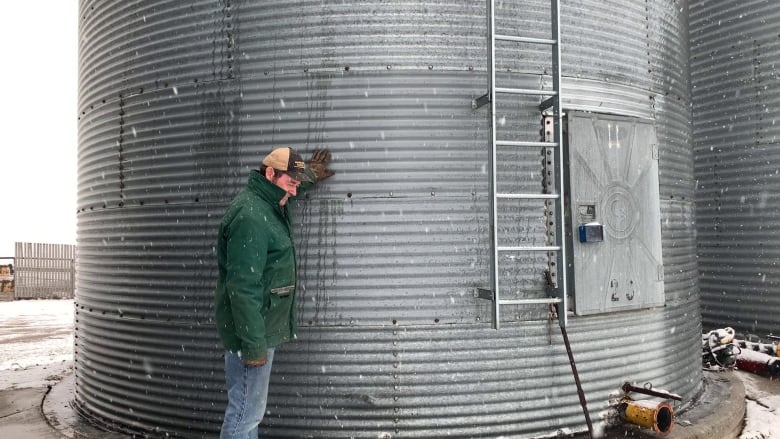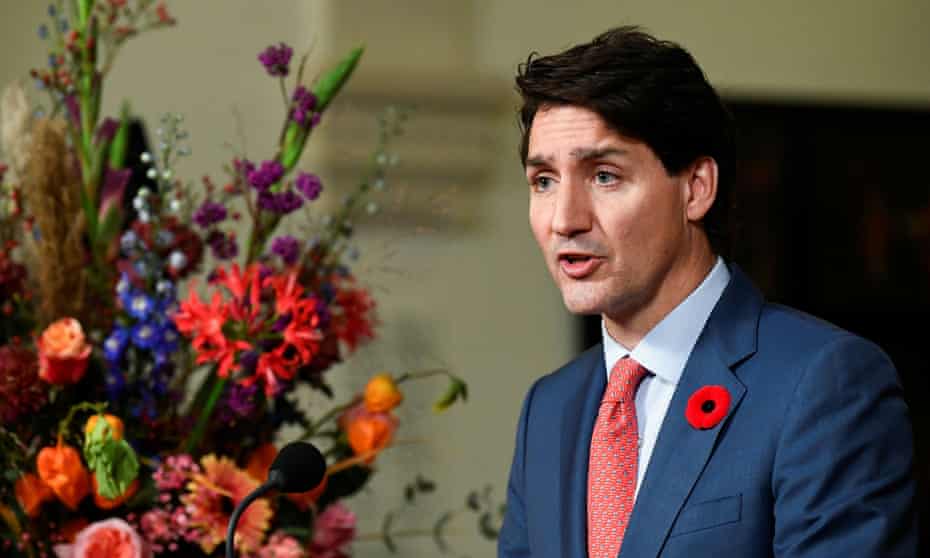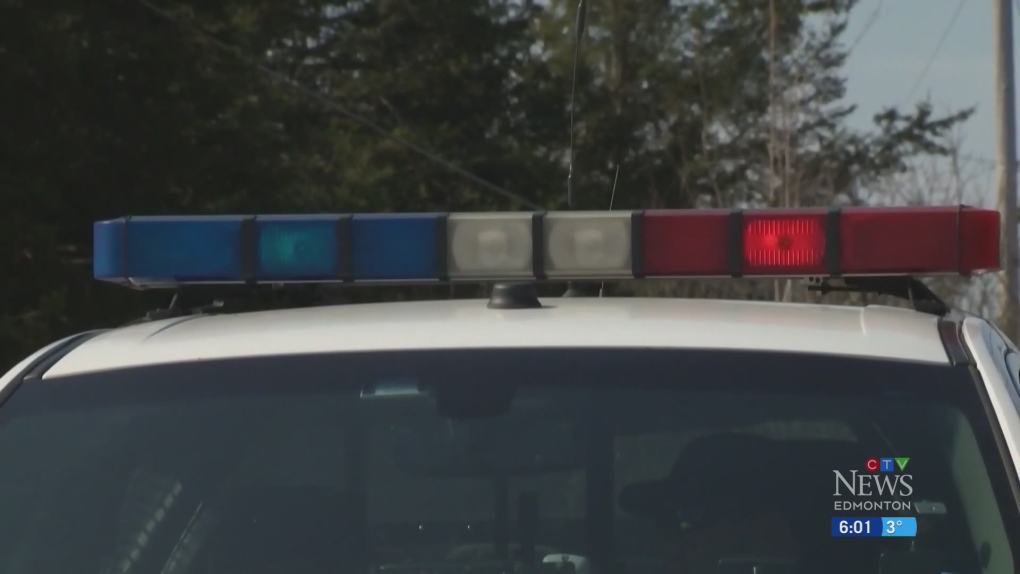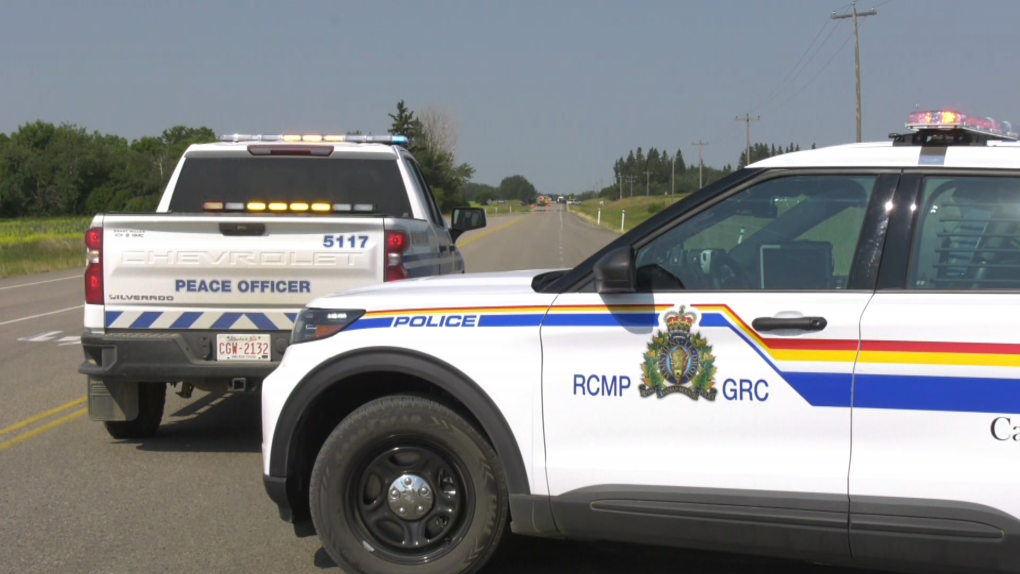On Alberta's dryland farms, reflections on a devastating year and an eye to what's next
Several municipalities declared agricultural disasters this
summer due to drought
Just north of the town of Vulcan, Alta., snow is falling on Markert Seeds, a dryland operation that grows wheat, barley, canola, peas and flax.
The first snowfall of the year means fall work on the farm is done. The moisture comes as a welcome relief after the summer, which saw droughts devastate operations across southern Alberta.
Ron Markert, president of Markert Seeds, just took out his 50th crop on the operation. He's seen good years and bad, and his experience has taught him how to prepare for the latter.
But like all dryland farming operations — which refers to the growing of crops without the use of irrigation in dry areas — the challenges of the past year in southern Alberta have hit hard.
"Looking at the numbers, roughly we had a third of a crop of what is an average crop," Markert said. "Some were worse, canola was probably worse than anything. But wheat, barley and peas were all down."
Alberta experienced scorching heat above 35 C for days this summer, setting record-breaking temperatures. A number of provincial municipalities declared agricultural disasters due to drought.
Farmers in southern Alberta saw a better harvest than expected in 2020. That made some cautiously optimistic after three previous years of drought-like conditions.
This year, crop insurance is important. But for less experienced farmers, even one challenging summer like this past one can lead to high levels of stress.
"The more [drought] you have, the worse it gets. It just drives you down further and further," Markert said.
Impact on mental health
Markert's son, Lee, who is the business's director of operations, said farmers his age across the province are now facing some difficult decisions.
"People in my generation are really coming into that time in their life when they've got kids to look after and trying to get them through school and sports," he said.
"You throw it all together, and you've potentially got a stressful situation when the crop isn't there to support them."
Humphrey Banack is a grain farmer in central Alberta and a board member of the Alberta Federation of Agriculture. He said when weather doesn't co-operate, all dryland farmers can do is watch their crops wither.
"It really plays hard mentally on people, when you see this happening," Banack said. "There's your livelihood in the field, you've made your plans, and all of a sudden those plans are changing."
Economic impact on local businesses
The impacts aren't just being felt by the farming population.
Ghassan Hamdan, owner of Mama's Pizza & Pasta in Vulcan, says the effect of struggling crops, paired with the impacts of the COVID-19 pandemic, has spread to businesses in the community.
"We lost more than 55 per cent of the business," Hamdan said. "And we're trying to stay open, but I don't know for how long we can fight this."
Local farmers used to come into his business twice a week for supper. Now, Hamdan said, he sees those same people twice a month, if that.
"The situation affects everybody. The workers, the farmers, everybody," he said.
Several worsening growing conditions
Stefan Kienzle is a geography professor at the University of Lethbridge who created an interactive website that lets Albertans explore how the climate is changing.
Dryland farmers in southern Alberta, particularly those living west of Lethbridge, are facing several worsening growing conditions, he said.
"Number one, they have less annual precipitation, especially during the summer," Kienzle said. "The key thing there is, the change in precipitation may just be a natural cycle, so at the moment we cannot make a clear link to climate change."
At the same time, dryland farmers are facing higher evaporation rates due to higher temperatures and a longer growing season, he said, which results in dryer soils.
"The increase in evaporation is 100 per cent linked to climate change," he said. "Then, of course, we have heat waves, such as the one we faced this year.... That heat wave sucked the remaining soil moisture out of the soils and really gave a lot of stress to the dryland farmers."
On top of that, dryland farmers are also facing an increased risk of pests, such as a grasshopper infestation observed this past summer, owing to the favourable conditions presented by very warm and dry soil conditions.
"The last four out of five years, we had summer drought conditions," Kienzle said. "So that means there was stress for the dryland farmers, not just in 2021 but quite a few years before."
A universal experience on dryland operations
When it comes to other dryland operations in southern Alberta, the sentiment is the same: This year was challenging, and many are taking the cold season ahead as a chance to reset.
Nichole Neubauer owns and operates Neubauer Farms with her husband. She said her family farm has been in existence since 1910.
"Our dryland crops only produced at a fraction of what they would," she said. "It was probably about a quarter of what we would average over the last 10 years."
Garry Lentz, who farms on a dryland operation 16 kilometres east of Medicine Hat, said crop insurance basically covers only the costs of production.
"There's no profit to be had this year in farming," he said. "It's a big disappointment. It puts everything on hold that you have planned."
And the challenges extend to dryland farms outside Alberta, too.
Hart Smith farms with his dad on Grace Hill Farms, a multi-generational organic grain farm in southwest Saskatchewan.
"Most of our crops and neighbours' crops did not fare well," Smith said. "This is my first year farming. For me, this year is one of my best and hopefully worst years ever."


























